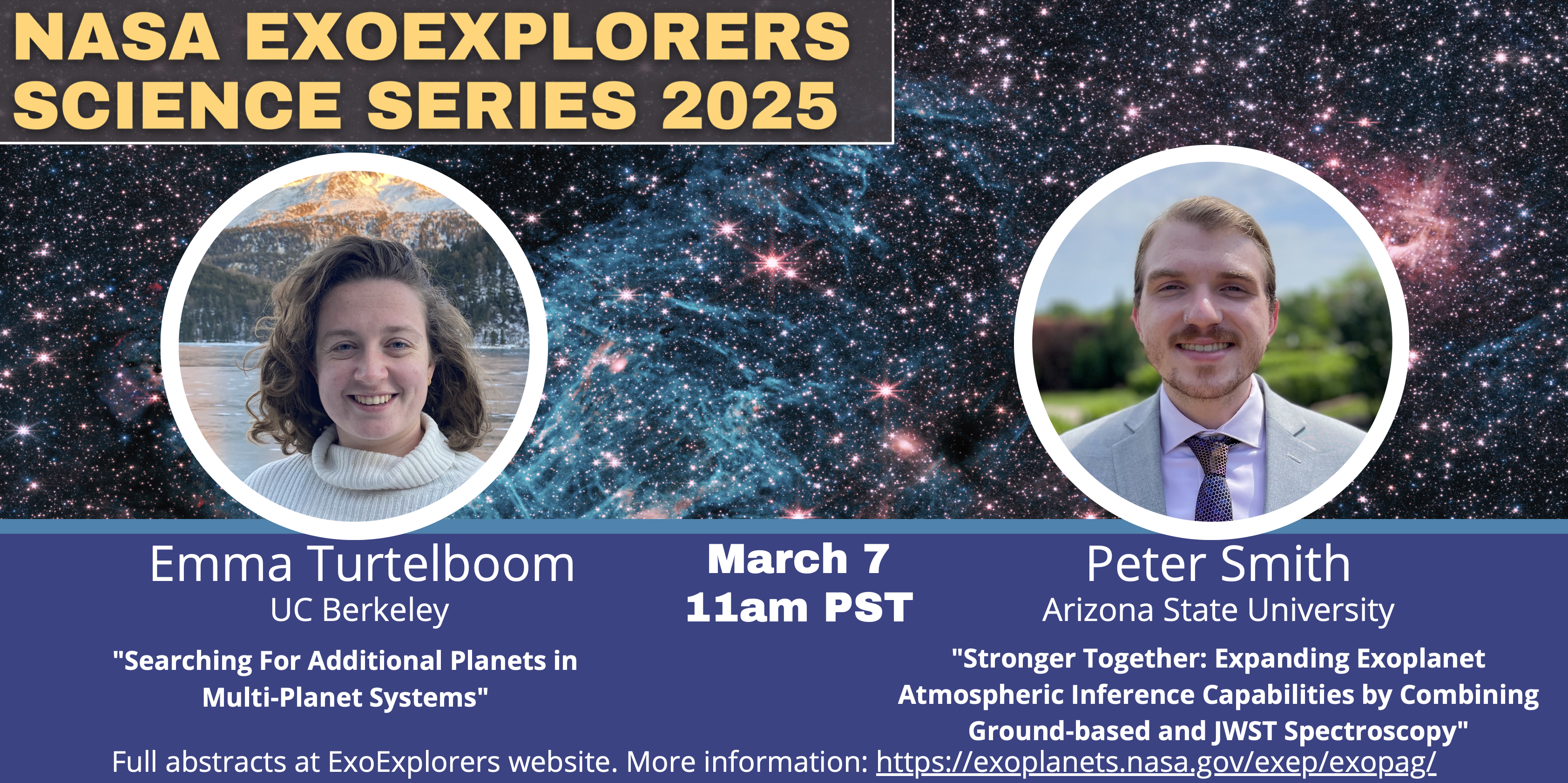Meetings & Events
ExoExplorer Science Series: Emma Turtelboom and Peter Smith
Date:
March 7, 2025Time: 11 AM - 12 PM Pacific Standard Time
Speaker: Emma Turtelboom
Title: Searching For Additional Planets in Multi-Planet Systems
Abstract: Multi-planet system architectures are powerful tools to constrain the evolutionary pathways of observed exoplanets. Therefore, understanding the predictive and descriptive power of empirical models of system architectures is critical to probing system formation histories. In this work, we analyzed 52 TESS multi-planet systems previously studied using DYNAMITE (Dietrich & Apai, 2020), who used empirical models based on Kepler planets to predict additional planets in each system. We used additional TESS data to search for these predicted planets, and thereby evaluated the predictive power of the underlying empirical models. Specifically, we studied whether a period ratio method or clustered period model more accurately predicted additional planets. We found that neither model is highly predictive, highlighting the need for additional data and nuanced models to describe the full exoplanet population.
Speaker: Peter Smith
Title: Stronger Together: Expanding Exoplanet Atmospheric Inference Capabilities by Combining Ground-based and JWST Spectroscopy
Abstract: In just a few short years, JWST has already revolutionized our understanding of exoplanetary atmospheres. However, cutting edge characterization is still being done with ground-based facilities. Space-based, low resolution spectroscopy (such as with JWST) and ground-based, high resolution spectroscopy are the two main avenues with which we can study transiting exoplanet atmospheres.
In this talk, I will discuss the differing capabilities of these two methods for measuring and interpreting exoplanet atmospheric spectra, and I will highlight ways in which ground-based spectroscopy in particular is transforming our understanding of planet formation and climate. Additionally, high and low resolution spectroscopy have complementary strengths and weaknesses, and the combination of the two can provide a more powerful probe of a planet's atmosphere than can be achieved by either method individually. I will describe how combining the two methods can result in more precise inferences and more comprehensive pictures of a planet's atmosphere.
Webinar Information
Join Zoom Meeting
https://caltech.zoom.us/j/88260962807?pwd=s7GH7jVBNRNZb2aVFeAZCR35Gjm6El.1
Meeting ID: 882 6096 2807
Passcode: 697257
One tap mobile
+16699006833,,88260962807# US (San Jose)
+12133388477,,88260962807# US (Los Angeles)
Dial by your location
• +1 669 900 6833 US (San Jose)
• +1 213 338 8477 US (Los Angeles)
• +1 346 248 7799 US (Houston)
• +1 312 626 6799 US (Chicago)
• +1 646 558 8656 US (New York)
• +1 301 715 8592 US (Washington DC)
Meeting ID: 882 6096 2807
Find your local number: https://caltech.zoom.us/u/kvWVsJMNt

